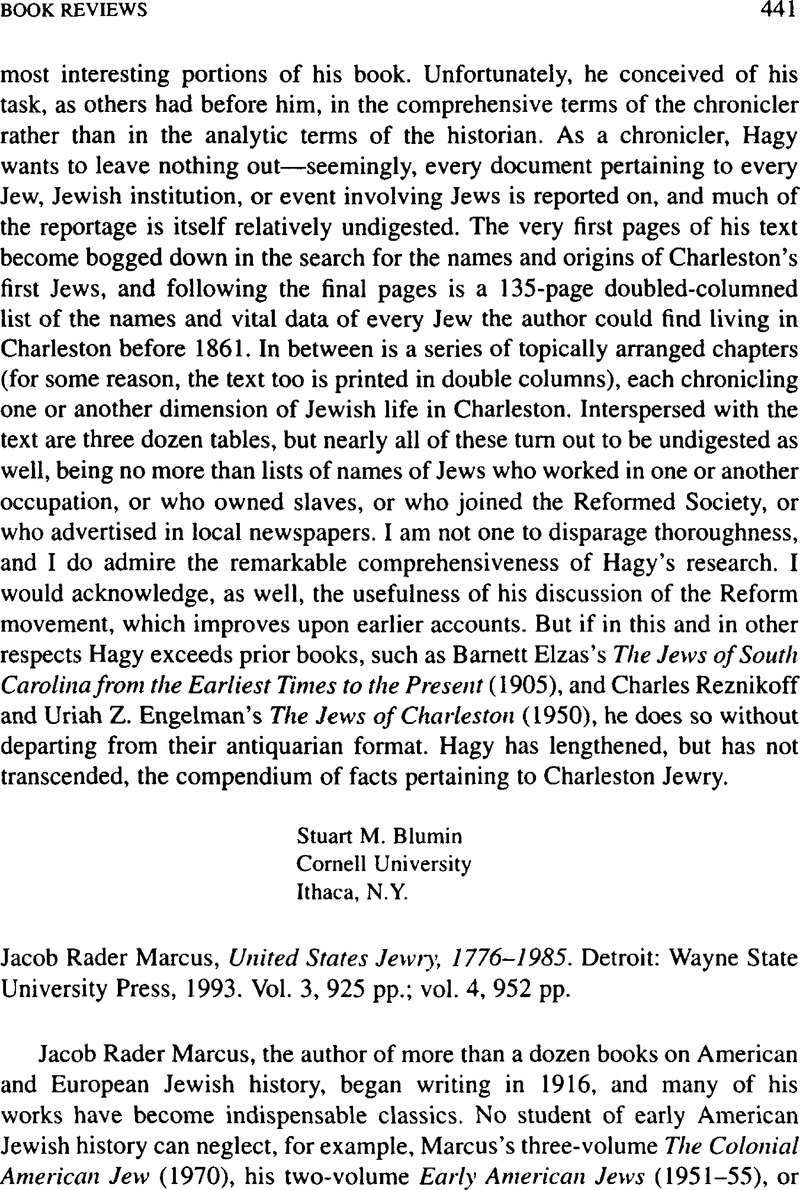No CrossRef data available.
Article contents
Jacob Rader Marcus, United States Jewry, 1776–1985. Detroit: Wayne State University Press, 1993. Vol. 3, 925 pp.; vol. 4, 952 pp.
Published online by Cambridge University Press: 15 October 2009
Abstract

- Type
- Book Reviews
- Information
- Copyright
- Copyright © Association for Jewish Studies 1995
References
1. Woocher, Jonathan, Sacred Survival (Bloomington, Ind., 1986), provides good evidence for his conclusion that the philanthropic federation movement is the most important defining element of the “civil religion” of the American Jewish community.Google Scholar
2. For new developments in Reconstructionism, see Alpert, Rebecca and Staub, Jacob, Exploring Judaism: A Reconstructionist Approach (New York, 1985)Google Scholar; Green, Arthur, See My Face, Speak My Name: A Contemporary Jewish Theology (New York, 1992)Google Scholar; and Raphael, Marc, Profiles in American Judaism (San Francisco, 1984)Google Scholar. On the growth and durability of Orthodoxy, see Bernstein, Saul, The Renaissance of the Torah Jew (Hoboken, N.J., 1985)Google Scholar; Davidman, Lynn, Tradition in a Rootless World: Women Turn to Orthodox Judaism (Berkeley, 1991)Google Scholar; and Kaufman, Deborah R., Rachel′s Daughters: Newly Orthodox Jewish Women (Newark, N.J., 1991).Google Scholar
3. Gorelick, Sherry, City College and the Jewish Poor: Education in New York, 1880–1924 (New Brunswick, N.J., 1981)Google Scholar; and Berrol, Selma, “Germans vs. Russians: An Update,” American Jewish History 73, no. 2 (December 1983): 142–156Google Scholar, consistently characterize the Germans as unmitigated paternalists who persistently tried to remake their embarrassing Russian “cousins” j by muting their Orthodoxy, their Yiddish, and their socialism. j
4. Diner, Hasia, “A Time for Gathering: The Second Migration,” American Jewish History 81, no. 1 (Autumn 1993): 22–33.Google Scholar
5. Unger, Irwin, “Critique of Norman Pollack′s ‘Fear of Man,’” Agricultural History 39 (April 1965): 75–80Google Scholar; Cohen, Naomi, “Anti-Semitism in the Gilded Age: A Jewish View,” Jewish Social Studies 41 (Summer-Fall 1979): 187–210Google Scholar; and Dinnerstein, Leonard, Uneasy At Home: Antisemitism and the American Jewish Experience (New York, 1987)Google Scholar. See also Handlin, Oscar, “Reconsidering the Populists,” Agricultural History 39 (April 1965): 68–74.Google Scholar
6. Hofstadter, Richard, Age of Reform (New York, 1955), p. 80.Google Scholar




